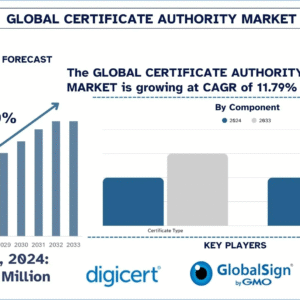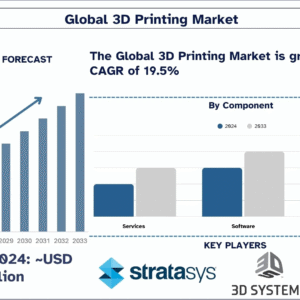In today’s fast-paced business environment, the demand for efficiency, accessibility, and data security has never been higher. Organizations are inundated with mountains of paperwork—from invoices, contracts, and employee records to client files and regulatory documents. Managing these paper-based records not only consumes valuable time and resources but also exposes organizations to risks such as data loss, unauthorized access, and compliance breaches. To address these challenges, businesses are increasingly turning to High Volume Document Scanning—a solution that transforms paper documents into organized, searchable digital files. Companies like DRM, Document Scanning & Shredding Service specialize in providing professional high-volume scanning solutions, helping businesses transition seamlessly toward a paperless and digitally empowered future.
Understanding High Volume Document Scanning
High Volume Document Scanning is the process of converting large amounts of physical documents into digital formats using specialized high-speed scanning technology. Unlike conventional scanning, which is suitable for small-scale tasks, high-volume scanning is designed to handle thousands or even millions of pages efficiently. These digital files can then be stored securely, indexed for easy retrieval, and integrated with document management systems, enabling organizations to manage information more effectively.
High-volume scanning is particularly essential for industries with extensive paperwork requirements, such as finance, healthcare, legal, education, and government. By digitizing paper archives, organizations can enhance operational efficiency, improve data security, and reduce the physical storage burden. DRM’s expertise ensures that each document is handled with precision and confidentiality throughout the scanning process.
Key Benefits of High Volume Document Scanning
1. Enhanced Operational Efficiency
Paper-based systems can slow down workflows considerably. Employees may spend hours searching for specific files in storage rooms or retrieving documents from off-site archives. With High Volume Document Scanning, all records are digitized, indexed, and stored in a searchable format. DRM leverages advanced Optical Character Recognition (OCR) technology, making scanned documents fully searchable by keywords. This instant access significantly reduces administrative time, accelerates decision-making, and enhances overall productivity.
2. Improved Data Security
Physical records are susceptible to theft, damage, or accidental loss. Digitizing documents adds multiple layers of security. DRM ensures that scanned files are encrypted, stored securely, and protected with access controls, restricting file access to authorized personnel only. Additionally, after scanning, documents can be securely shredded through DRM’s certified shredding services, eliminating the risk of sensitive information falling into the wrong hands. This approach helps businesses meet compliance requirements such as GDPR, HIPAA, and ISO standards.
3. Cost Savings and Space Optimization
Maintaining paper archives is costly. Organizations spend significant resources on storage space, filing systems, and administrative labor. By implementing high-volume scanning, businesses can drastically reduce storage costs and free up physical space for other productive uses. Digital records eliminate the need for extensive filing cabinets and off-site storage facilities, lowering operational expenses while streamlining workflows.
4. Disaster Recovery and Business Continuity
Paper records are vulnerable to natural disasters such as floods, fires, or other catastrophic events. Once digitized, documents can be backed up on secure servers or cloud-based storage solutions, ensuring that critical information remains accessible even during emergencies. DRM’s high-volume scanning services provide businesses with a reliable disaster recovery solution, safeguarding essential records and supporting uninterrupted operations.
5. Eco-Friendly and Sustainable Operations
Reducing paper usage is not only cost-effective but also environmentally responsible. By adopting High Volume Document Scanning, organizations contribute to sustainability initiatives, reducing paper waste and lowering the environmental impact associated with printing, filing, and transporting documents. This aligns with corporate social responsibility goals while promoting greener business practices.
How DRM Facilitates High Volume Document Scanning
DRM, Document Scanning & Shredding Service provides end-to-end solutions for high-volume scanning projects. Their structured approach ensures accuracy, security, and efficiency, helping businesses make the transition to paperless operations smoothly.
- Document Preparation: Files are sorted, cleaned, and organized to ensure smooth scanning. Staples, paper clips, and bindings are removed to prevent interruptions.
- High-Speed Scanning: Advanced scanners are used to digitize thousands of pages per hour without compromising image quality.
- OCR and Indexing: Scanned documents are processed using OCR technology, making text searchable and allowing for customized indexing according to client needs.
- Quality Assurance: Every scanned file undergoes rigorous verification to guarantee clarity, accuracy, and completeness.
- Secure Storage and Disposal: Digital files are delivered securely in the preferred format, and physical originals can be shredded to maintain confidentiality.
This comprehensive process ensures that businesses receive a complete, secure, and organized digital repository of their records, paving the way for paperless operations.
Real-World Applications and Benefits
Organizations across various sectors have experienced transformative results through DRM’s High Volume Document Scanning services:
- Financial Institutions: Banks and investment firms have dramatically reduced document retrieval times from days to minutes, enhancing client service and operational efficiency.
- Healthcare Providers: Hospitals and clinics have improved patient care by ensuring secure and instant access to medical records, while maintaining compliance with HIPAA regulations.
- Legal Firms: Law offices can quickly locate case files and legal documents, streamlining workflows and improving client satisfaction.
- Government Agencies: Digitized records help in faster processing of citizen requests, audits, and compliance checks, while reducing paper storage requirements.
These examples illustrate that high-volume scanning not only improves productivity but also strengthens data security and supports regulatory compliance.
The Path Toward Paperless Operations
High Volume Document Scanning is more than just a technological upgrade—it is a strategic step toward modern, paperless operations. By digitizing documents, businesses can:
- Improve collaboration and accessibility through centralized digital storage.
- Reduce operational costs and physical storage needs.
- Enhance security and regulatory compliance.
- Prepare for disaster recovery with reliable digital backups.
- Promote sustainability and environmental responsibility.
Partnering with a trusted provider like DRM, Document Scanning & Shredding Service ensures that this transition is smooth, secure, and efficient. DRM’s expertise in managing large-scale scanning projects allows businesses to confidently embrace a digital-first approach without disrupting day-to-day operations.
Conclusion
In the digital era, High Volume Document Scanning is a crucial enabler for organizations aiming to optimize productivity, protect sensitive data, and embrace paperless workflows. By converting physical documents into organized, searchable digital formats, businesses gain faster access to information, reduce operational costs, enhance security, and support sustainability goals.
DRM, Document Scanning & Shredding Service provides professional, secure, and high-speed scanning solutions tailored to meet the needs of organizations of all sizes. Investing in high-volume scanning today is not just about digitizing records—it’s about empowering your business for a more efficient, secure, and sustainable tomorrow. Transitioning to paperless operations with DRM ensures that your organization remains competitive, compliant, and future-ready.



